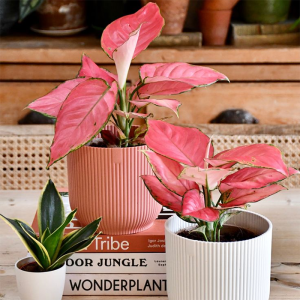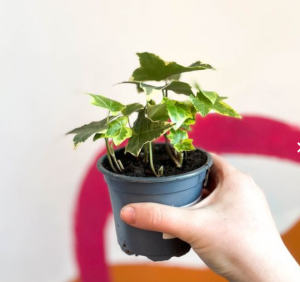- English
- Chinese
- French
- German
- Portuguese
- Spanish
- Russian
- Japanese
- Korean
- Arabic
- Irish
- Greek
- Turkish
- Italian
- Danish
- Romanian
- Indonesian
- Czech
- Afrikaans
- Swedish
- Polish
- Basque
- Catalan
- Esperanto
- Hindi
- Lao
- Albanian
- Amharic
- Armenian
- Azerbaijani
- Belarusian
- Bengali
- Bosnian
- Bulgarian
- Cebuano
- Chichewa
- Corsican
- Croatian
- Dutch
- Estonian
- Filipino
- Finnish
- Frisian
- Galician
- Georgian
- Gujarati
- Haitian
- Hausa
- Hawaiian
- Hebrew
- Hmong
- Hungarian
- Icelandic
- Igbo
- Javanese
- Kannada
- Kazakh
- Khmer
- Kurdish
- Kyrgyz
- Latin
- Latvian
- Lithuanian
- Luxembou..
- Macedonian
- Malagasy
- Malay
- Malayalam
- Maltese
- Maori
- Marathi
- Mongolian
- Burmese
- Nepali
- Norwegian
- Pashto
- Persian
- Punjabi
- Serbian
- Sesotho
- Sinhala
- Slovak
- Slovenian
- Somali
- Samoan
- Scots Gaelic
- Shona
- Sindhi
- Sundanese
- Swahili
- Tajik
- Tamil
- Telugu
- Thai
- Ukrainian
- Urdu
- Uzbek
- Vietnamese
- Welsh
- Xhosa
- Yiddish
- Yoruba
- Zulu
- Kinyarwanda
- Tatar
- Oriya
- Turkmen
- Uyghur

Popular indoor foliage plants like Chinese Dieffenbachia are renowned for their exquisite leaves and great shade tolerance. Though it is rather flexible, winter’s cold and dry weather might still affect its health.

greenControl of Lighting
Winter brings much different light conditions, which influences the development of Chinese Dieffenbachia. While Chinese Dieffenbachia has somewhat modest light needs, correct light is still essential to guarantee its healthy development. Because of the reduced natural light hours in winter, it is advised to keep the plant in a spot with high illumination, say next to a south-facing window. Enough indirect light from this spot will enable the plant to maintain regular photosynthesis. You might also want to take into account employing plant growth lights to offset the darkness. Good options are fluorescent or full-spectrum LED lights. These lights can replicate natural light and provide the needed light intensity and duration for different plants. The plant’s development and health will benefit from daily 12 to 14 hours of light.
Regulation of Temperature
Particularly in the chilly winter, temperature is very vital for Chinese Dieffenbachia to flourish. Chinese Dieffenbachia thrives in a warm climate with an appropriate range of temperature from 18°C to 24°C. Indoor temperatures usually decrease in winter, hence particular care should be made to keep the plants warm. Plant placement near exterior walls or chilly windows should be avoided if one wants to prevent being impacted by cold winds. Avoid putting plants under direct air conditioning or heating at the same time as well as this could lead to abrupt temperature fluctuations and plant stress. Maintaining a constant indoor temperature is a crucial factor for the good development of plants.
Controlling humidity
Winter dry air may endanger the health of Chinese Dieffenbachia. Development of plants depends on rising air humidity. One good approach to maintain indoor humidity between 50% and 60% is using a humidifier. Should a humidifier not be accessible, think about putting wet towels around the plants or arranging them on a tray of water to boost air humidity via water evaporation. While rising humidity helps plants, too much humidity may sometimes lead issues. Thus, even when raising humidity, guarantee excellent air circulation to avoid long-term wetness of the leaves of the plants, thereby lowering the danger of mildew and diseases.
Watering Strategies
Usually slowing down the development rate of plants in winter will be the need for water will also drop. The health of the plants depends on watering frequency being changed to fit the winter surroundings. In winter, the sluggish evaporation of the moisture in the soil calls for less frequency of watering. Maintaining a somewhat dry surface for the soil can help to greatly stop rot at the roots and water buildup. Although watering once every two to three weeks is enough generally, the particular frequency should be changed depending on the actual state of the plant and the environmental humidity. One should evaluate the soil’s moisture level before watering. About two to three centimetres deep, you can puck your finger into the ground. Should the soil seem dry, you must water it. You may momentarily cease watering if the ground is still damp.
Modification of fertiliser
Chinese evergreen’s growth rate will slow down in winter, and so will the requirement for fertiliser. Usually, the frequency of fertilisation should be lowered to prevent too strong fertilisation, which can cause fertiliser buildup and damage the plant. You may fertilise once or twice a month and decide to use slow-release or diluted liquid fertiliser. To satisfy plants’ fundamental dietary requirements, choose fertilisers with a balanced nitrogen, phosphorous, and potassium ratio—like 10-10-10. Steer clear of overly powerful fertilisers to prevent aggravating or destroying the plant.
Disease and pest control
Even if winter brings reduced occurrence of pests and illnesses, it is still advisable to routinely monitor the health of Chinese Evergreen. Changes in temperature and humidity during winter might bring several pests and illnesses like spider mites, grey mould, and powdery mildew. When diseases or pests are discovered, quick actions should be done, including applying suitable fungicides or insecticides for treatment. Equally vital are preventive actions. Maintaining appropriate humidity and excellent ventilation can assist to lower the insect and disease incidence. Frequent cleaning of dropped leaves and weeds around the plant helps to safeguard the health of the plant by lowering the surroundings for pests and disease breeding.
maintenance of leaves
In winter especially, leaf care is very crucial. Low temperatures and dry air might trouble leaves. The leaves will remain glossy and healthy if you routinely wipe them with a moist cloth to eliminate dust and grime. To prevent damaging the plant, steer clear of chemical cleansers. Should you discover that the leaves are yellowing, low temperatures, inadequate humidity, or poor watering might all have bearing on this. Early trimming may help yellow leaves stay generally healthy and stop diseases from infecting other healthy leaves.
Repotting: Timing
While winter is not the ideal season to repot, sometimes it is still required. You might want to think about springtime repotting if you see crowded roots or poor soil quality. Try to avoid repotting in winter as it will stress the plant more. Select appropriate potting soil and containers, then make sure the new soil drains well while repotting. To prevent harm, carefully handle the roots of the plant; the new pot should be somewhat bigger than the old one so the plant has more space to flourish.

Winter Chinese Dieffenbachia care calls for many factors including light, temperature, humidity, water, fertilisation, pest and disease management. Reasonably changing these environmental variables will enable Chinese Dieffenbachia to survive the winter and preserve a healthy and luxuriant condition. Chinese Dieffenbachia may still display its distinctive beauty and vigour in the indoor setting despite the severe winter circumstances with proper management and care. Maintaining the health of the plant depends mostly on regular observation of its development and time-based modification of the care actions. Chinese Dieffenbachia may stay vibrant in the winter season and keep adding colour and charm to the interior surroundings by means of scientific and reasonable maintenance.
Previous News
Optimal light conditions for hybrids of Caladiu...Next News
Environmental conditions suitable for the growt...


